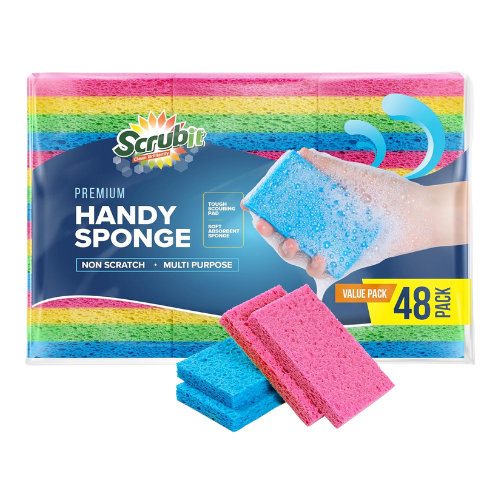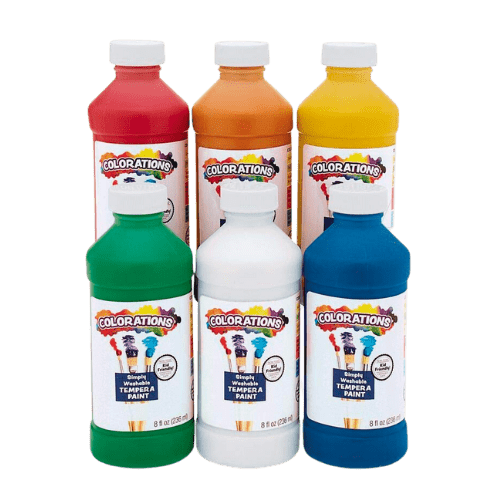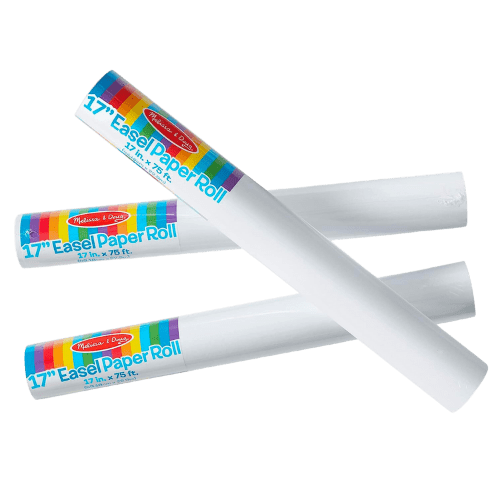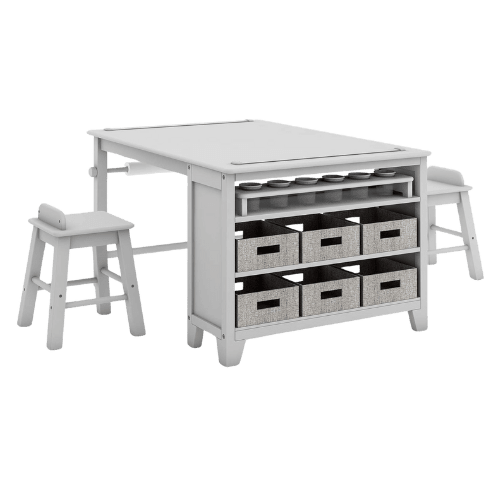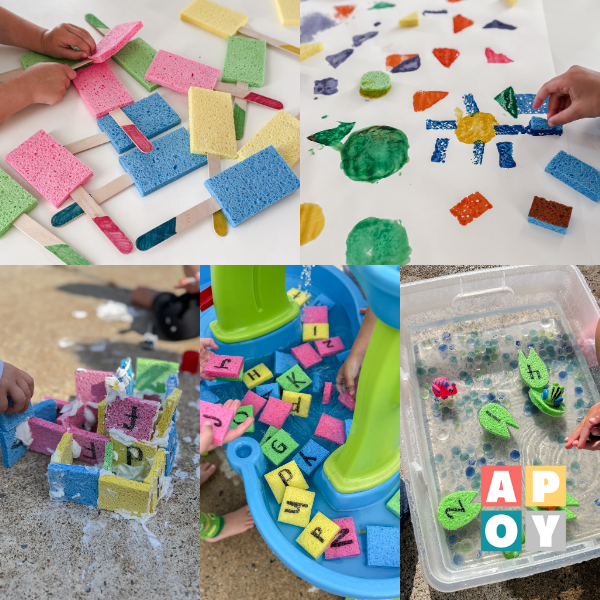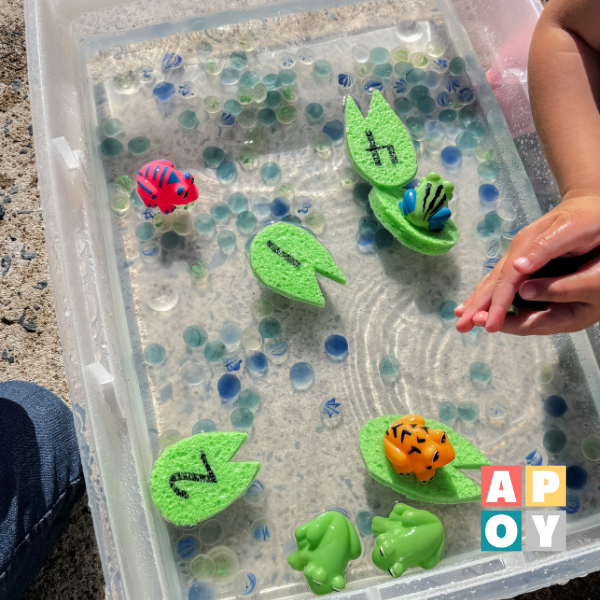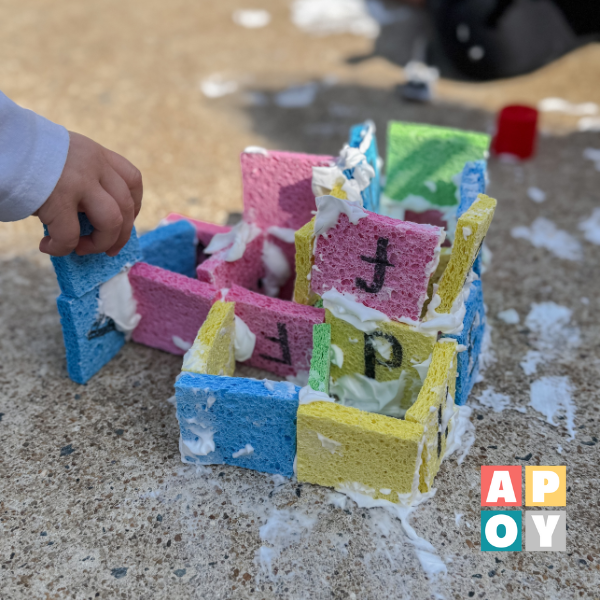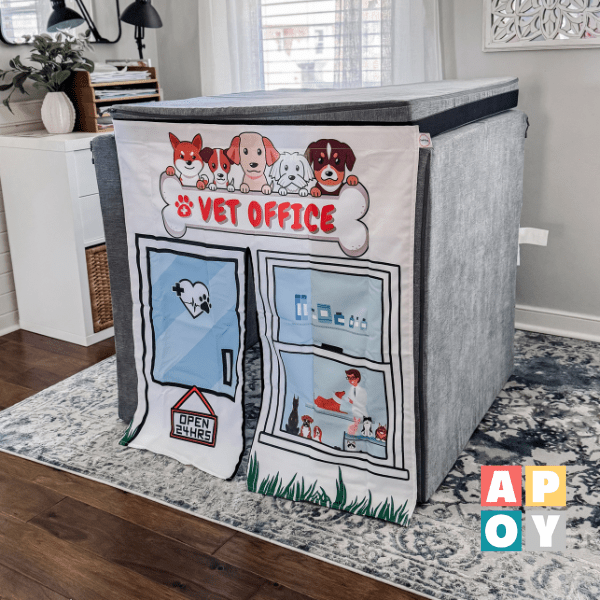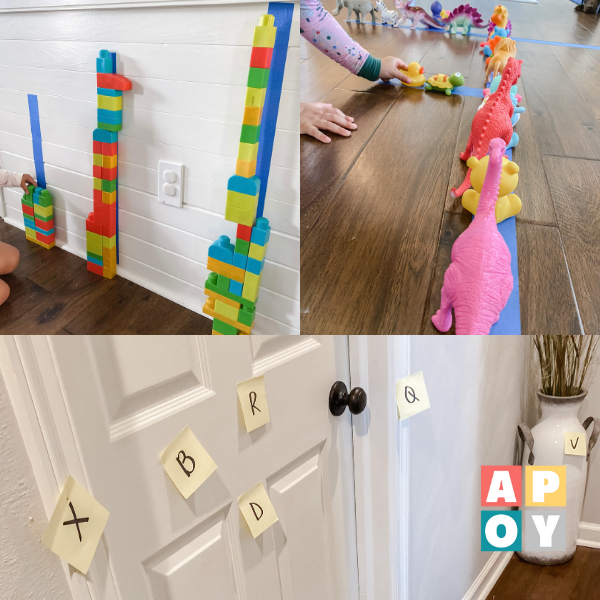Sponge Shape Stamping: A Colorful Way to Teach Shapes and Colors at Home
Looking for a simple at-home learning activity? Try sponge shape stamping—an easy sponge activity that teaches shape and color recognition through sensory play using random household objects.
This blog post may contain affiliate links. When you make a purchase through these links, I may earn a small commission, at no additional cost to you. I only recommend products that I genuinely believe can benefit you and your family! Your support helps maintain and improve all things A Pop of You. Thanks so much!
Sponge Shape Stamping: A Surprisingly Genius Use for That Forgotten Cleaning Sponge
You know those colorful sponges you grab in a multi-pack for cleaning, then forget about entirely unless something spills in the fridge? Well, it’s time to give them a glow-up. This is one of those activities with random household objects that looks impressive, but it’s secretly as low-effort as it gets.
Sponge shape stamping is a simple at-home learning activity that sneaks in shape recognition, color recognition, sensory play, and a whole lot of fun—all while using things you already have on hand. I promise this is one of those activities where your toddler gets wildly into it… and you get five minutes to drink your coffee while it’s still hot.
This is part of my random household objects series, and today we’re giving colorful sponges their moment to shine!
What Is Sponge Shape Stamping?
Sponge shape stamping is exactly what it sounds like: you cut regular household sponges into basic shapes (think square, circle, triangle, and rectangle), dip them in paint, and stamp them onto paper to create colorful, shape-filled art.
It’s a sponge activity that’s equal parts learning and sensory fun—and it just happens to leave you with a fridge-worthy masterpiece at the end. This activity checks all the toddler activity boxes:
- It’s a sensory activity.
- It supports color recognition and shape recognition.
- It’s hands-on and open-ended.
- It uses materials you already have (bless).
- It can be cleaned up with one paper towel and a little rinse.
Why Use Sponges for Learning Activities?
Colorful sponges are basically the MVP of simple at-home learning. They’re squishy (hello, sensory learning), cheap, and endlessly versatile. Plus, they’re surprisingly satisfying to cut into little shapes, and they don’t roll away like toy cars do mid-activity.
Here’s why sponges are a solid choice for learning activities:
- They add a sensory component to learning—perfect for hands-on kids.
- They’re soft and easy for little hands to grip.
- You can rinse and reuse them again and again (eco win!).
- They absorb paint just enough to stamp but not enough to make a mess explosion.
When you’re doing activities at home, especially with toddlers, materials that are easy to prep, use, and clean up are absolute gold. Sponges are that gold.
What Kids Learn from Sponge Shape Stamping
This may look like a cute little craft, but there’s real learning happening here. When your toddler is pressing sponges into paint and stamping them all over the page, they’re working on:
- Shape Recognition: Cutting sponges into basic geometric shapes gives your child repeated exposure to visual patterns. They begin to learn the difference between a triangle and a rectangle without needing a worksheet or flashcards. Real-life visuals stick better anyway.
- Color Recognition: By using multiple paint colors, you give your child the chance to name, sort, and recognize different colors. If they’re just starting to learn, you can say the color aloud as they use each one. Bonus points for asking them to find “another red stamp” or “all the blue ones.”
- Sensory Learning: Squeezing the sponge, dipping it into paint, pressing it onto paper—it’s all sensory gold. This kind of sensory activity helps build neural connections and supports fine motor development. Basically, it’s a learning party for the brain.
- Cause and Effect: Your child quickly learns that dipping the sponge in paint leads to a visible stamp. Watching how the shapes appear and layer builds a simple understanding of cause and effect.
- Patterning (Optional Extension): If your child is ready, you can encourage them to stamp a pattern: red square, blue triangle, red square, blue triangle. It’s an early math skill disguised as fun.
Materials You’ll Need
Here’s your short, sweet, no-fancy-stuff-needed supply list:
- Colorful kitchen sponges
- Scissors (for adult use)
- Washable paint (always)
- Paper plates or shallow trays for paint
- Large sheet of paper or butcher paper
- Damp towel or wipes for quick cleanup
- Smock or old clothes (optional but encouraged)
How to Do Sponge Shape Stamping
This is one of those sponge activities that takes two minutes to set up and keeps little hands busy for way longer than expected. Here’s how to make it happen:
- Cut your sponges into shapes. Grab a few clean, dry sponges and cut them into basic shapes: square, circle, triangle, rectangle. Don’t worry about perfection—wonky shapes still teach the same concepts.
- Set up your paint. Pour a little washable paint into paper plates or trays. Use a different plate for each color if you don’t want the “brown paint mystery swirl” to happen (you know the one).
- Prepare your stamping station. Lay down a big sheet of paper on a table or the floor. This is your canvas. If your child is likely to go full Jackson Pollock, maybe throw a sheet under the area too.
- Demonstrate the stamp. Show your child how to press the sponge into the paint and then onto the paper to create a stamp. They’ll get it fast—and then take off in their own creative direction.
- Let them explore. Stand back and let them go to town. You can prompt learning by saying things like, “Can you find the red circle?” or “Let’s count how many triangles you made!”
- Extend the play (if they’re into it). You can encourage sorting the sponges by shape or color afterward, talk about size comparisons (“Which shape is the biggest?”), or even rinse them and use them again tomorrow.
Tips to Maximize the Learning (Without Killing the Fun)
We’re not here to make things complicated. But if you want to squeeze a little extra learning juice out of this activity, here’s how:
- Say the names out loud: As they stamp, say, “You used the yellow square!” This casual narration supports vocabulary and concept reinforcement.
- Sort and group shapes afterward: Once the paper is covered in stamps, invite your child to point out all the circles or count all the red shapes.
- Use shape cards for matching: Hold up a flashcard with a shape and have them find the matching sponge or stamp the correct one.
Why This Works for Busy Parents
You don’t need a Pinterest-perfect craft setup or a giant prep window to make this kind of activity work. Sponge shape stamping is:
- Fast to prep
- Easy to clean
- Uses what you already have
- Calm enough for quiet time
- Open-ended enough to use again and again
When you’re trying to juggle toddlers, laundry, and answering one million questions before 9 a.m., having go-to activities like this in your back pocket is key. Plus, this is one of those kids’ learning activities where the learning happens naturally through play. No charts, no lectures—just stamps and sponges and a whole lot of fun.
More Ideas for Activities Using Sponges
Colorful sponges are basically the Swiss Army knife of toddler learning tools. Cheap, versatile, and easy to store. I keep a stash in a drawer just for moments like these. So, if you liked this one, check out the other activities in the series:
- Sponge Popsicle Color Match: Cut sponges into popsicle shapes and paint or color each one in vibrant shades. Create matching “popsicle stick” cards or use colored cups. Your child matches the sponge popsicles to the correct color. A refreshing way to practice color sorting—no freezer required!
- Sponge Water Table Letter Match: Cut sponges into squares and write letters on each one with a permanent marker. Drop them into a water table or bin and invite your child to fish out specific letters, match them to a chart, or spell simple words. Great for reinforcing letter recognition in a fun, sensory-rich way!
- Sponge Shaving Cream Buildings: Use halved sponges and foam shaving cream as “glue” to build towers, houses, or whatever their little hearts imagine. Take it outside for a sensory-filled fine motor activity that feels like play and sneaks in learning. Perfect for outdoor learning and exploring balance, cause and effect, and tactile play.
- Sponge Number Sense Lily Pad Water Activity: A math-meets-sensory bin moment starring lily pad sponges, number recognition, and frog friends. Toddlers count stones to match each numbered sponge, building early math skills while having a blast with water play.
Final Thoughts
Sponge shape stamping is the kind of activity that reminds us how simple, joyful learning at home can be. No fancy materials. No endless prep. Just a sponge, some paint, and a child ready to explore.
So if you’re looking for a way to teach colors, shapes, and sensory skills without losing your sanity (or your living room), give this a try. You might be surprised how much learning and laughter come from something so simple. And if you find yourself cutting sponges into stars, hearts, or the entire alphabet next week… you’re not alone!



Hey, I’m Katelyn, the “Achievably Extra” Mom! Join me for creative family fun and practical tips! Let’s inspire each other!




